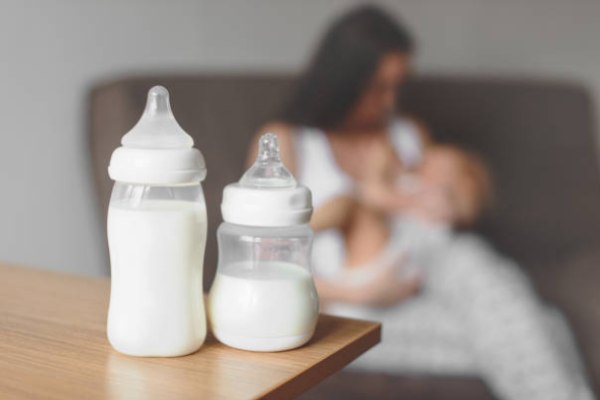If you are expecting or planning a second pregnancy again and want to continue breastfeeding, you probably have many questions.
Is breastfeeding in pregnancy safe? How will this affect the fetus? How will this affect my second child? Can I breastfeed two children at once?
All these questions and feelings are understandable. While deciding whether to breastfeed or not is not always clear, understanding the benefits and risks will help you determine what’s best for everyone involved.
Find out how pregnancy and breastfeeding work, and other questions that interest you below.

Five important tips for pregnancy and breastfeeding
As the pregnancy progresses, it’s safe for both your little ones and the developing fetus, especially as breastfeeding releases hormones like oxytocin, which can cause mild uterine contractions.
In fact, that’s why our first breastfeeding advice is so important.
1. Talk to your doctor first
You can never be too careful, especially when it comes to your babies.
In general, breastfeeding in pregnancy is safe. Although amounts of pregnancy hormones may be present in your breast milk, they are not harmful to your child.
In addition, oxytocin is released in small quantities during pregnancy, so it is not enough to induce preterm birth. The contractions caused by this hormone are very small and rarely increase the chance of a miscarriage occurring.
However, there are certain circumstances when your doctor may advise you to take away your child, such as:
- If your pregnancy is considered a high risk or there is a risk of miscarriage
- If you are carrying twins
- If you have had uterine pain or bleeding
Talking to a healthcare provider will be a crucial part in determining whether you should breastfeed during pregnancy.
If this is not recommended in your unique situation, that’s fine – you’ve done a great job, and now it’s important for your body to prepare for a new baby and the next chapter of your breastfeeding.
2. Sit or lie down while breastfeeding
It’s no secret that breastfeeding and/or pumping need energy, which can be difficult to get out with both a baby and a developing pregnancy.
Be sure to sit or lie in a place to relax while breastfeeding to give yourself extra time to rest while your baby is feeding.
As the pregnancy continues to progress, you may need to creatively create new breastfeeding positions, which are comfortable for you and your little one.
3. Monitor the milk supply
Many milk supplies for moms will begin to decrease around the 4th or 5th month after birth, so it’s important to start introducing a second diet into your baby’s diet.
If they are satisfied after breast milk feeding and meet the markers of growth and weight, there is usually nothing to worry about. The second diet that the child receives will compensate for any temporary or permanent reduction in breast milk intake.
Chatting with your toddler’s doctor and/or an experienced lactation counselor can be especially helpful during this time.
After your new baby arrives, it is important that they get colostrum, that is, early milk. With this in mind, you may decide to breastfeed him first and/or temporarily restrict your baby’s breastfeeding during these first few days after the birth of a new baby.
4. Think about your diet.
By now, you know all about how good eating is important for your baby’s health – both during developing pregnancy and after birth.
However, consuming extra calories is also crucial for you, Mom!
Pregnancy and breastfeeding require a lot of energy, so it is important to ensure that you are ingesting the best foods for pregnant women and a sufficient number of calories to maintain your own general health.
The general rule is:
- It takes 500 extra calories if your child is breastfeeding and also eating other foods, or 650 extra calories if he is younger than 6 months.
- This is with the addition of the necessary 350 calories if you are in the 2nd trimester of pregnancy or 450 extra calories required if you are in the 3rd trimester of pregnancy.
Most healthcare providers agree that extra calories are not needed if you are in the 1st trimester of pregnancy, which is often considered a positive for moms who have morning sickness.
5. Invest in breast and nipple care
You probably already know that nipple inflammation can be a common disease of nursing mothers, but this can be especially noticeable if you are expecting a baby and breastfeeding.
This is because breast sensitivity is a common symptom of pregnancy, so it’s time for self-care important for mental and physical health.
Stocking up on products like lanolin and hydrogel pads can provide some necessary over-the-top relief, so be sure to stock up!
Breastfeeding during pregnancy is possible
In many situations, breastfeeding during pregnancy can be done.
Remember, even though you may be tired, irritable, busy, or otherwise exhausted, your body is providing babies with important care.
See also the best apps for pregnant women.